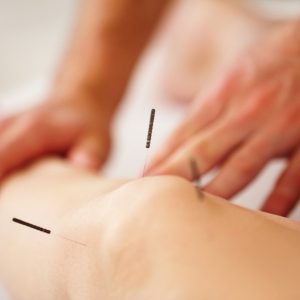 Trigger points are ‘knots’ in the muscles or fascia in the body. These trigger points are hypersensitive contractures which cause shortening, weakening and tightening of the surrounding muscle This can cause pain at the site, or at a distant location where this compromised structure acts such as at the foot, ankle, knee or hip.
Trigger points are ‘knots’ in the muscles or fascia in the body. These trigger points are hypersensitive contractures which cause shortening, weakening and tightening of the surrounding muscle This can cause pain at the site, or at a distant location where this compromised structure acts such as at the foot, ankle, knee or hip.
Trigger points can be caused by a variety of factors. Some of these include:
- Flat or pronated feet
- High arched or supinated feet
- Your walking pattern. That is, how your foot moves when you walk and how it uses your muscles
- The overuse or overstretching of your muscles
- Trauma
Trigger point therapy and dry needling are two methods of releasing these ‘knots’. Releasing the trigger points allows the muscle to relax and function as it should. This then helps to reduce the symptoms and improve function. Trigger point therapy or dry needling are used in conjunction with other treatments in order to help manage both the cause of the problem and the symptoms.
Trigger point therapy is also known as myofascial release. It involves compression of the area of the ‘knot’ to achieve the release. Dry needling involves inserting a needle into the ‘knot’ to stimulate release. While the exact mechanism behind the release is not well understood, it is believed that in general terms, both methods stimulate the release of the ‘knot’ by stimulating a nervous system response which sends signals for the release of hormones and natural body chemicals that are involved in muscle relaxation and pain relief.
Trigger point therapy and dry needling can be useful tools in the management of several conditions. This includes but is not limited to:
- Muscle tightness in the calves, hamstrings or Achilles
- Limb length discrepancies
- Heel pain such as plantar fasciitis
- Tendon injuries such as Achilles tendinopathy or posterior tibial tendinopathy
- Shin splints (also known as medial tibial stress syndrome)
- Aching feet and legs
Several sports injuries

Comments are closed.